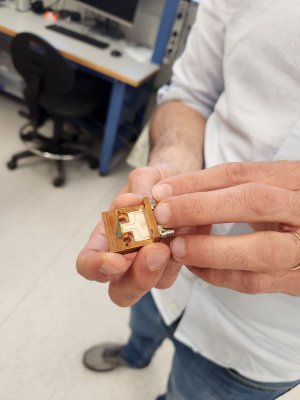Researchers demonstrate generation of orbital current via magnetization dynamics
While the field of spintronics tries to leverage the spin angular momentum of electrons to develop new technologies, these particles' orbital momentum has so far been rarely considered. Currently, generating an orbital current (i.e., a flow of orbital angular momentum) remains far more challenging than generating a spin current. Nonetheless, approaches to successfully leveraging the orbital angular momentum of electrons could open the possibility for the development of a new class of devices called orbitronics.
Researchers at Japan's Keio University and Germany's Johannes Gutenberg University have reported the successful generation of an orbital current from magnetization dynamics, a phenomenon called orbital pumping. Their outlines a promising approach that could allow engineers to develop new technologies leveraging the orbital angular momentum of electrons.
